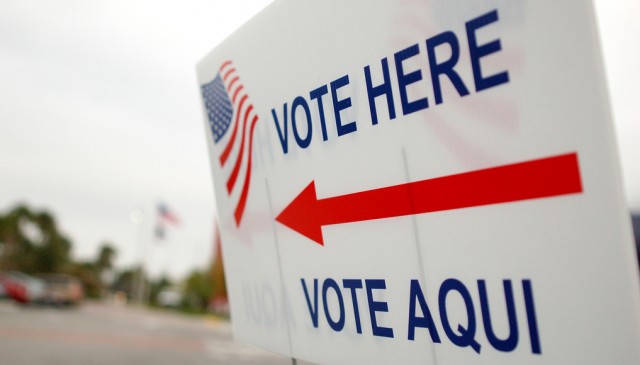In attempt to highlight and enact change where needed, the Legal Coordinating Committee of Wisconsin Election Protection and the League of Women Voters released to the public on Friday their 2018 Midterm Election Report. With 278 volunteer observers in 497 polling sites across Wisconsin, the report makes recommendations to better coordinate, implement and engage voters throughout Wisconsin.
Overall, with 2.67 million Wisconsin citizens (about 59 percent of the voting age population) voting, the report concludes that locations were “welcome, safe, and well-served” for voters. Issues that showed up, however, throughout locations including inconsistent understanding of rules for both voter ID and voter registration, inadequate space for voting locations, inaccessible polling sites, confusion with signage and long lines.
Specific issues observed in Madison included:
– Lines of 100 or more
– Voters having to wait more than an hour to vote along with the inability to assist with voter needs, including one site that had difficulties accessing their own accessible voting equipment when requested by a voter because the polling site was so busy and a request for curbside voting not provided
– Inadequate voting space – observers noted one area where a polling site in Dane County required a second polling place and in another, a clerk had called in police officers to assist with line management as they were limited in space due to e-poll books and space needed for voters to complete ballots
– Confusing signage at one location that caused voters to mistakenly head to one line and having to be redirected back into another.
Positive Observations in Madison included:
– Polling site greeters helping to direct voters as needed to the appropriate wards
– Ability to prioritize voters over absentee ballots to keep lines moving smoothly
– On site staff to provide language assistance (some with clearly identifiable badges)
Though, overall, voters in Madison were engaged and had positive experiences, there were specific issues observed that impacted the most underserved.
– Tribal communities were impacted most by issues of proof of residency – often these sites were twice as likely to have voters turned away at registration than sites that did not serve Tribal communities due to lack of proof of residence. These issues stem from shared housing were a voter did not have their name on a lease or utility bill to show proof of residence or where mail is received at a PO Box (P.O. Box addresses can not be used as a residence when registering to vote).
– Confusion about that could be used as a proof of residence, including what was considered a “government document,” being told that someone needed two documents for proof of residence,
– One homeless voter who was unable to show proof of residence due to moving day to day from shelter to shelter not being able to use a letter from a shelter as proof of residence since the address of the shelter was not listed.
– Issues with poll workers not following rules about electronic copies for proof of residence including on voters’ cell phones in dane county
Misinformation about both voter ID as well as when to provide provisional ballots to voters also greatly impacted voters and poll workers. Issues with what was an acceptable form of ID (i.e. in Madison – voters believing they could use their out of state driver’s license or students who attempted to use their Wiscard student IDs) and applying the voter ID law appropriately plagued the state (i.e. checking voters addresses on their photo ID, misspellings of a voters name in poll books). The rate of which provisional ballots were offered and the number of sites asking voters about their addresses on their photo ID did not improve in this last election as compared to November 2016.
The report did make further recommendations which included:
– Expand online voter registration and educate voters state wide about online registration – including providing better instructions and materials to be shared to voters.
– Continue with same day registration
– Bring back corroboration for voters who lack proof of residence. This allows voters to use another voter to corroborate their residence (requiring the poll worker to obtain identifying information from the corroborator as an additional safeguard)
– Expand forms of ID (including ID issued by the federal govt. state of WI or WI county or local govt), out of state driver’s lcense, regular collge and university ID cards from all WI colleges and tech schools, etc.
– Assist with ID Issuance
– Provide better and easy direction and language about the ID requirement and how to obtain ID
– Better outreach and education throughout the state about where to vote, how/where to register, etc.
– Better training and education for both chiefs and poll workers
– Keep in-person absentee voting as well as enhance staffing


































